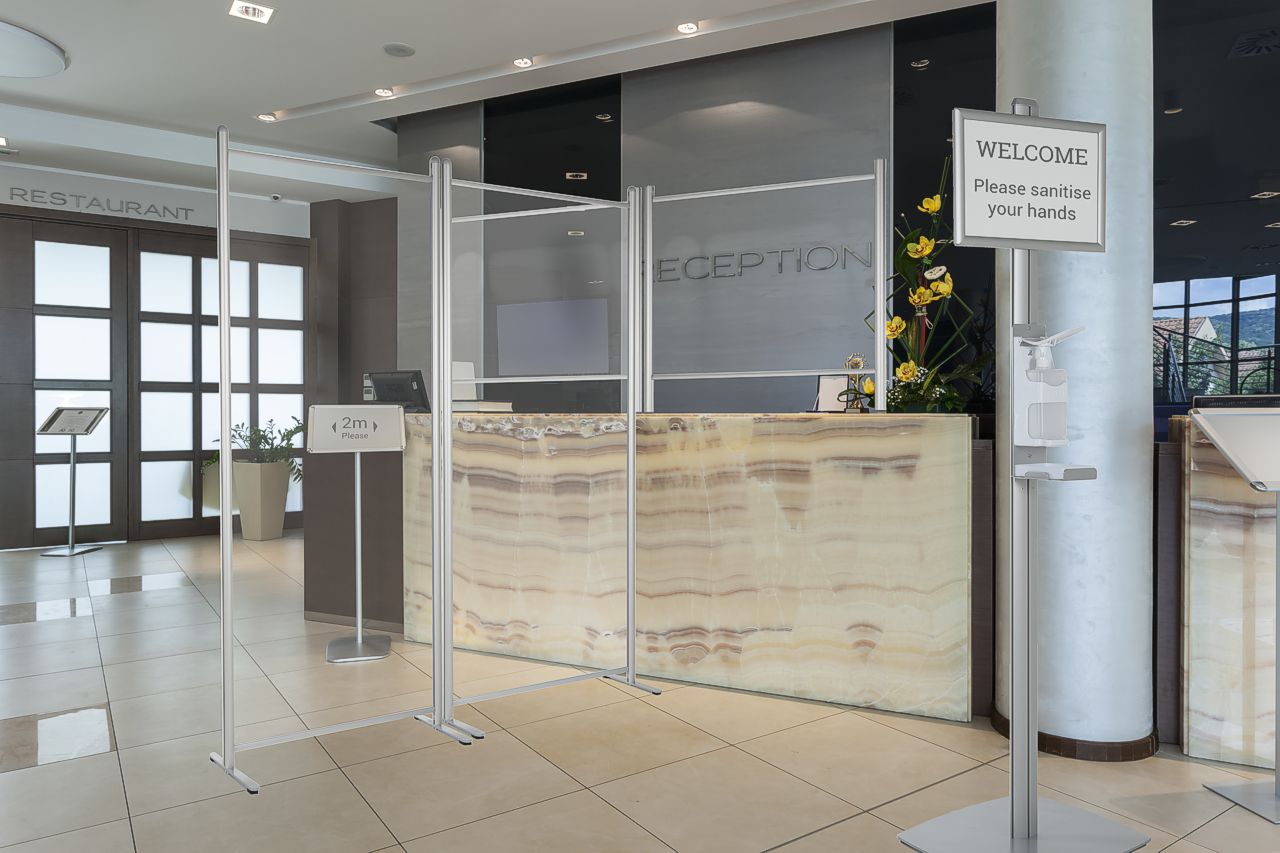With every sector of public, business and private life affected by Covid and tens of thousands of office workers working from home, we share our thoughts on the new normal. To help you adapt to new ways of working, learning, shopping and socialising we have assembled a comprehensive collection of Coronavirus virus protection products and hand hygiene solutions.
We are also pleased to offer our thoughts about Covid-19 Virus Protection solutions and guidance updated for 2021. Read more...


During 2020 we learnt a good deal about which virus protection measures are most effective in the fight against Covid-19 and now have a clearer understanding about what works. While vaccination gradually makes the world a safer place once more, we believe there will be a futher 'long-Covid' after-effect with respect to the need to create a safe working environment for a long time to come. As a supplier of virus protection products designed to help prevent the transmission of Covid-19 we offer below our perspective on some key measures needed to help control Coronavirus in 2021.
Keeping humans apart is the principal factor in limiting virus transmission. When the virus is out of control a full lockdown is the ultimate weapon, until less drastic distancing rules can return. However, ‘safe distance’ is never an absolute figure. For example, the level of risk is influenced by factors such as setting – indoors higher risk than outdoors, and dwell time – length of time spent in proximity. Two metres apart was always a simplified general-purpose distance. However, the message to keep 2m apart is clear, simple and can easily be reinforced with signs and floor stickers.
We all know Coronavirus is frequently transmitted from human to human without any direct contact. But little is known about why a new variant of Coronavirus is more transmissable. It is worth understanding the known viral transmission mechanisms for Coronavirus, to identify which protection measures we could upgrade.
Airborne transmission can be thought of essentially as two separate mechanisms depending on the size of droplets – and the defenses for each are quite different. So firstly let us look at virus transmission through the air, and then we’ll discuss transmission by contact.
Think of droplets as ‘spray’ and aerosols as ‘mist’. Droplets fall to the ground while mist swirls around. Humans exhale both.
Droplets may be large enough to contain an infectious dose of virus (like a direct-hit poison arrow). In contrast, minuscule aerosol particles may only contain tiny amounts of virus but exposure over a period can allow the viral load to build and become dangerous. Like billowing smoke the aerosol particles can build up and linger longer in an enclosed space, or preferably disperse harmlessly outdoors, and ditto indoors with suitable ventilation.
In contrast, droplets don’t travel that far, probably accounting for the ubiquitous two metre social distancing rule to offer protection. Even speaking generates droplets, though coughing and sneezing discharges droplets at speed, as does shouting and singing, causing these droplets to travel further. There are two well proven ways to reduce the risks of this close-range transmission: face coverings and screens.
A face mask captures many droplets and slows down the speed of discharge. Wearing a mask (in at risk situations) is widely regarded as the badge of the good citizen. It mainly protects others, rather than the wearer. We believe face coverings will remain good practice in appropriate circumstances throughout 2021 and possibly beyond. Leaving the nose uncovered greatly reduces the effectiveness and some premises now wisely display signs stating that any face covering must cover the mouth and nose to be granted entry. Some high-end masks, as used in ICUs etc., also offer protection to the wearer through advanced filtration, but these are not likely to feature in everyday use.
Clear separator screens play an important role in close-proximity protection, especially for people speaking to each other within, say, one metre. Essentially any clear material such as glass or plastic which prevents droplets reaching the other person is effective. It does not have to be a particular brand of plastic such as Perspex or Plexiglass, or a particular thickness. That choice depends on the design of the finished screen – e.g. freestanding or supported in a frame etc. We offer a comprehensive range of protection screens suited to different circumstances.
Placement of the screen is important to intercept the spit trajectory. For example, when customers in a shop must pack their grocery bags resting on the floor (because no packing shelf is provided) they may be compelled to stoop below the screen line into the direct line of fire of the checkout assistant (and vice versa). Screen dividers need to be sized and positioned with consideration to the location and circumstances e.g. both parties standing, one party seated etc.
When aerosol particles drift and hover in the air a protection screen may achieve little or nothing. The ‘mists’ will simply roll over the top or around the edges. As a rough guide, if the adjacent humans are 2 meters or more apart a protection screen is not effective. However, in this situation you do need to consider air flows and ventilation, especially if people are likely to stay put for some minutes or a longer period.
A recirculating air conditioning unit without a good filter may be a problem. If a stream of ‘infected’ aerosol exhaled by a carrier of the disease (even if they display no symptoms) is directed at people some distance away (for example seated at a table on the other side of the room for some time) transmission can occur. The dwell time is a significant factor: thankfully momentarily passing downstream of an infected person on a breezy day does not represent the same risk.
Ventilation is a good thing in order to reduce risk. When a window is opened in a room rapid dilution of any infected breath occurs keeping the viral load low and reducing risk of infection.
It is well known that Coronavirus can be transferred from the hands to mouth and eyes and that thorough hand washing or use of hand sanitiser is indicated. We believe that as offices gradually become occupied once again there will be an ongoing demand for hand sanitiser dispensers which we can supply. The pros and cons of different hand sanitiser delivery systems are discussed in our recent Blog article.
The choice of hand sanitiser liquid or gel is also worth considering as there are many products now on the market with different efficacy claims. As with surface disinfection products we recommend you look for information about virucidal properties. A product which kills bacteria may be unsuited, or at least untested, in relation to the ability to neutralise Coronavirus as it is not a bacteria.
On surfaces it also pays to clean thoroughly and frequently, even though it is now thought there is a low risk of catching Coronavirus from surfaces. A word of advice here: virucidal products should be applied to clean surfaces as they are not really effective on dirty surfaces.
Clear guidance is very important, even on simple things like getting in and out of the building and the social distancing rules that have been agreed for each individual workspace, school or hospitality venue. As a leading supplier of signage products we have everything you need to create adaptable guidance systems and signs, both for indoors and outside, to help deliver a safe Covid-secure environment.
Written by Nigel Spelman, Chairman of Green Magic Company (formerly a Chartered Engineer and member of CIBSE)